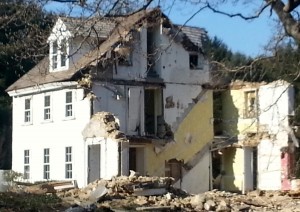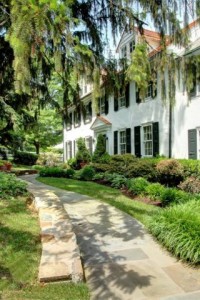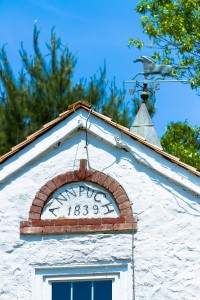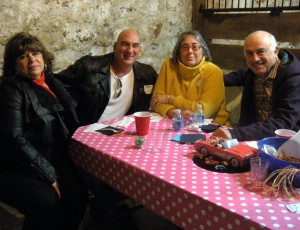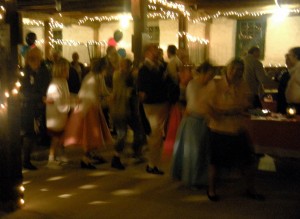For historic preservationists, the destruction of any historic property is difficult but is compounded when it occurs in your own backyard. What makes Tredyffrin Township truly unique is its rich architectural heritage: the old homes and buildings that tell the story of the community’s past, that continue to bring pleasure in the present, and will, if properly cared for, inform and inspire the future.
In 2003, Tredyffrin Township’s Historic Architectural Review Board (HARB) undertook what would become an extensive award-winning architectural survey, identifying more than 350 historic resources in the township. As a member of HARB, I was involved in the review and cataloging of the township’s historic buildings for this project.
According to this historic resource survey, the William Pugh Farm (also called Ann Pugh Farm and A. Glass Farm) received a historic survey Class II structure rating. The primary architectural style was listed as Georgian and identified the structural system as stone with shake roof. In the report on the Pugh farmhouse, the surveyor comments include, “recommendation for potential individual listing on the National Register of Historic Places”.
The township’s historic survey description of the property states that the original owner, William C. Pugh, made iron augers in his blacksmith shop at this farm in 1873 and is responsible for the road’s name. A 1980 survey date suggests that the Pugh farmhouse lists a date of 1750 for the first section and 1830 for the later wing. This date associates with the date stone of the springhouse of 1832 and that of the barn showing 1839 (see photos below). According to the historic survey records, “the blacksmith shop was extant in 1980 close to the road, but appears to have been demolished. Pugh’s property was sold by 1883 to A. Glass, who held 20 acres in 1887. The complex is distinctive as a combined farmstead with a farmer blacksmith shop and barn.”
When completed, Tredyffrin Township’s award-winning historic resource survey received statewide attention with the 2007 Preservation Award from Preservation Pennsylvania. At the December 2004 Board of Supervisors meeting, former State Representative Carole Rubley presented the Government Initiative Award on behalf of the Commonwealth to Jim Garrison, who was the Chairman of the Historical Architectural Review Board at that time. In the minutes of that BOS meeting, Rubley stated that the survey “will be a planning tool for preservation practices in the Township. Mrs. Rubley congratulated the HARB for this great honor, and said it made her proud of the Township.” A longtime supporter of historic preservation in Tredyffrin Township, I don’t know that the demolition of the 18th century Ann Pugh Farm would make her proud.
In 2009, the township staff, representatives of the Planning Commission and HARB and members of the community took on the arduous task of updating the Comprehensive Plan & Historic Preservation Plan. At that time, I was a member of HARB and served on the citizens committee that helped create the revised planning tool.
In the description of purpose for the Historic Preservation Plan, the document states, “…the Township recognizes the importance of its existing historic resources and the role they play in contributing to the Township’s character. The Historic Preservation Plan will assist the Township and its residents in appreciating the importance of preserving and protecting historic resources.”
Given the township’s stated support of historic preservation, then I must believe that something went terribly wrong regarding the Ann Pugh Farm, insofar as there were no red flags raised before granting the demolition permit on this property. According to Bill Martin, the township manager, the permit was applied for and reviewed by township staff. In an email he stated, “Unless the home is protected, the code department has no ability to deny or delay these applications.”
The township has the historic resource survey book that documents, by street address, the 350+ historic properties, with descriptions and photographs. When the township staff receives a demolition permit request, it would only take a couple of minutes to check whether the property is included in the historic resource survey. The property was only purchased last month, how is it possible that a demolition permit can go through the township in less than 30 days? It’s too late to make a difference for the 18th century Pugh Road house but going forward, something needs to change.
Unless the process changes regarding notification of demolition applications, there’s nothing to keep this from happening over and over. Although I am no longer a member of the Historic Commission, I continue to serve as the president of Tredyffrin Historic Preservation Trust and chair of the Annual Historic House Tour. I was disheartened to read on that township website that starting in 2014, the Historic Commission is no longer holding monthly meetings but has instead decreased its meeting schedule to quarterly. And unfortunately, the township no longer has a HARB which may have helped protect this historic property from demolition.
For historic preservation to matter, and for our local history to be meaningful, it needs to be supported.
In 2007, I had the pleasure of co-chairing the township’s Tredyffrin 300 celebration with my friend Judy DiFilippo. The community came together that year to celebrate our three hundred years of history. Our history was important when the township was founded in 1707, it was important when we celebrated the 300th year of its founding in 2007, and … its history and its historic resources should be important to preserve in 2014.
In the words of early preservationist William Morris, “These old buildings do not belong to us only, they belong to our forefathers and they will belong to our descendants unless we play them false. They are not in any sense our own property to do with as we like with them. We are only trustees for those that come after us.”
———————————————————————————————————
Remembering the Ann Pugh Farm, circa 1792 with a few photos — a loss of an 18th century historic treasure
